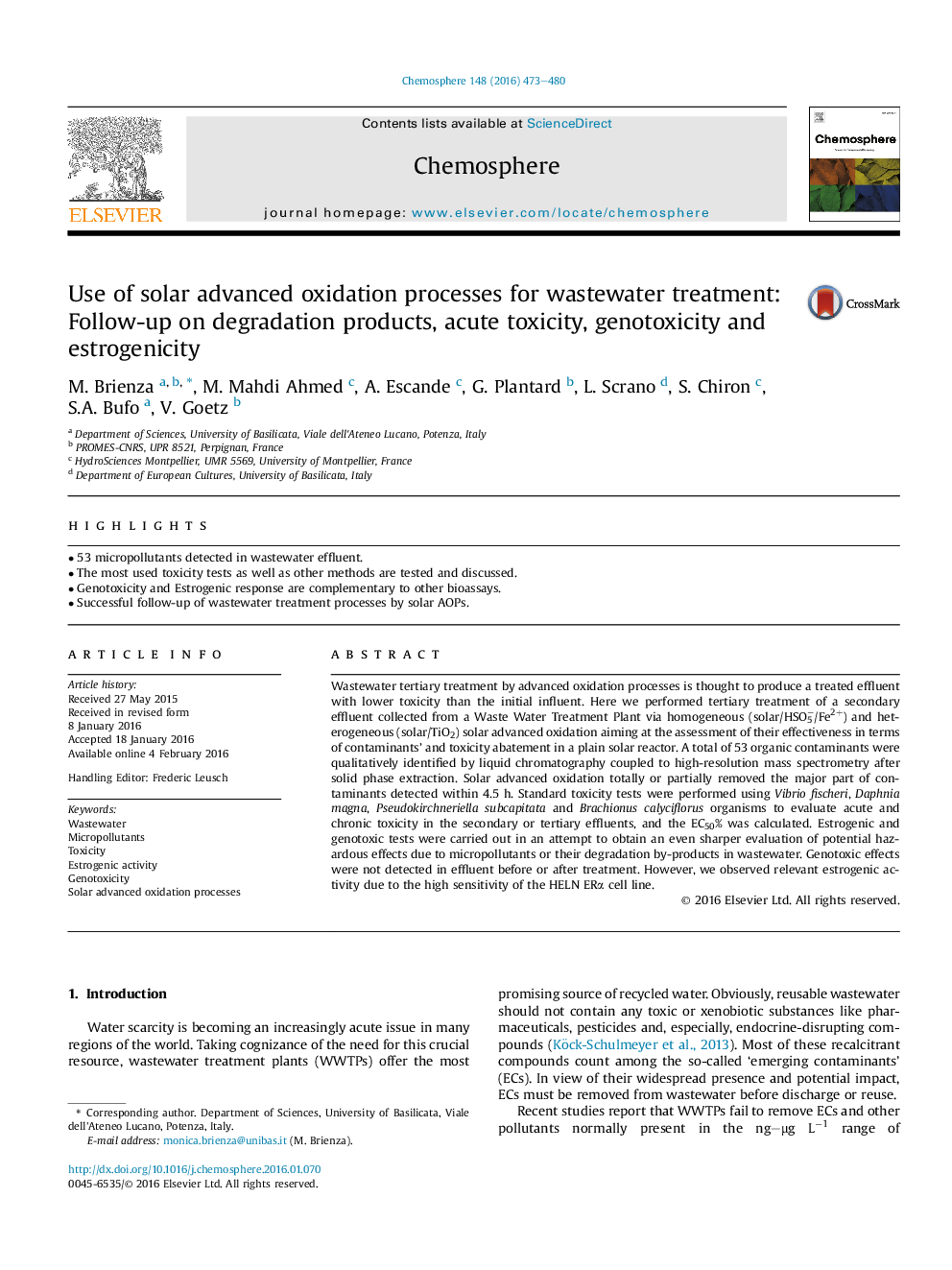| کد مقاله | کد نشریه | سال انتشار | مقاله انگلیسی | نسخه تمام متن |
|---|---|---|---|---|
| 4407867 | 1618823 | 2016 | 8 صفحه PDF | دانلود رایگان |
• 53 micropollutants detected in wastewater effluent.
• The most used toxicity tests as well as other methods are tested and discussed.
• Genotoxicity and Estrogenic response are complementary to other bioassays.
• Successful follow-up of wastewater treatment processes by solar AOPs.
Wastewater tertiary treatment by advanced oxidation processes is thought to produce a treated effluent with lower toxicity than the initial influent. Here we performed tertiary treatment of a secondary effluent collected from a Waste Water Treatment Plant via homogeneous (solar/HSO5−/Fe2+) and heterogeneous (solar/TiO2) solar advanced oxidation aiming at the assessment of their effectiveness in terms of contaminants’ and toxicity abatement in a plain solar reactor. A total of 53 organic contaminants were qualitatively identified by liquid chromatography coupled to high-resolution mass spectrometry after solid phase extraction. Solar advanced oxidation totally or partially removed the major part of contaminants detected within 4.5 h. Standard toxicity tests were performed using Vibrio fischeri, Daphnia magna, Pseudokirchneriella subcapitata and Brachionus calyciflorus organisms to evaluate acute and chronic toxicity in the secondary or tertiary effluents, and the EC50% was calculated. Estrogenic and genotoxic tests were carried out in an attempt to obtain an even sharper evaluation of potential hazardous effects due to micropollutants or their degradation by-products in wastewater. Genotoxic effects were not detected in effluent before or after treatment. However, we observed relevant estrogenic activity due to the high sensitivity of the HELN ERα cell line.
Journal: Chemosphere - Volume 148, April 2016, Pages 473–480
